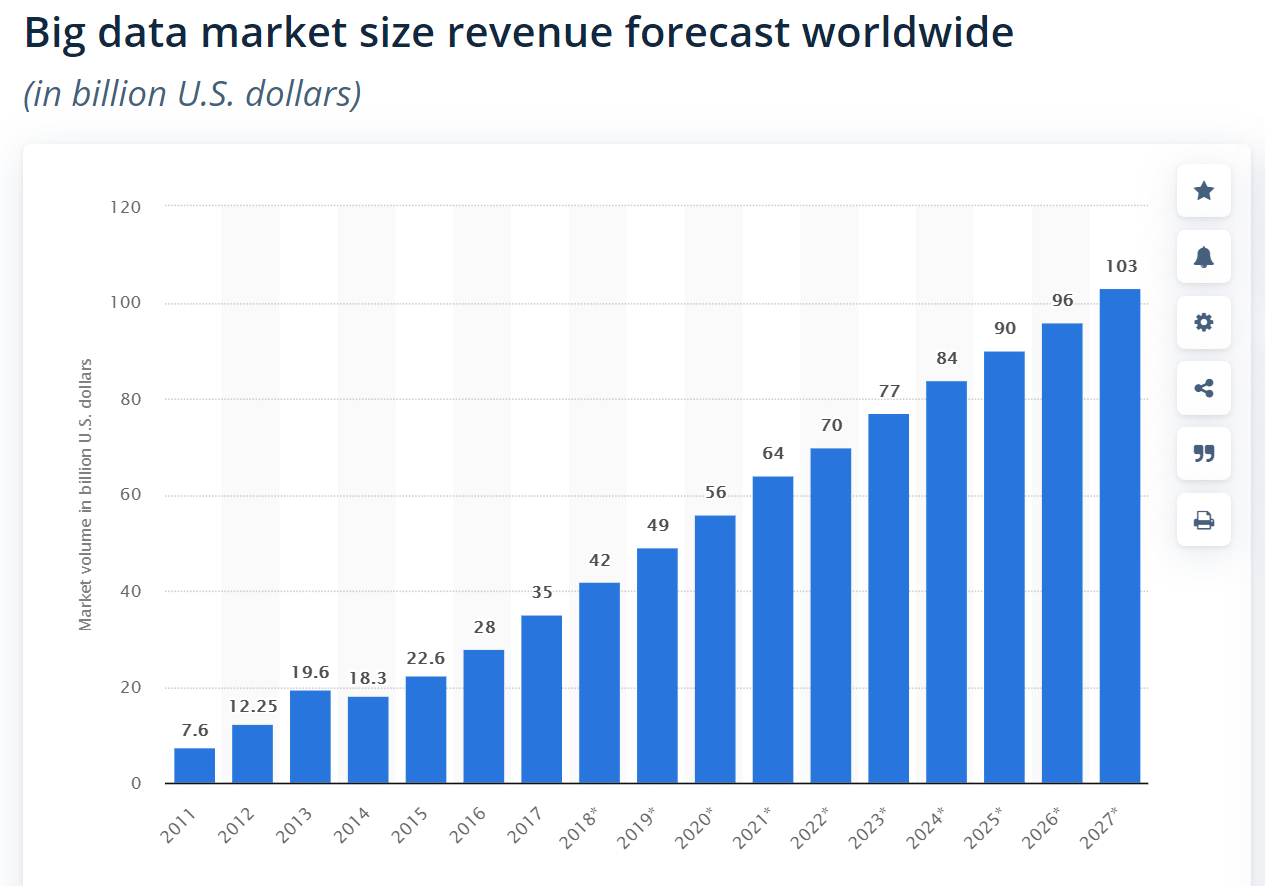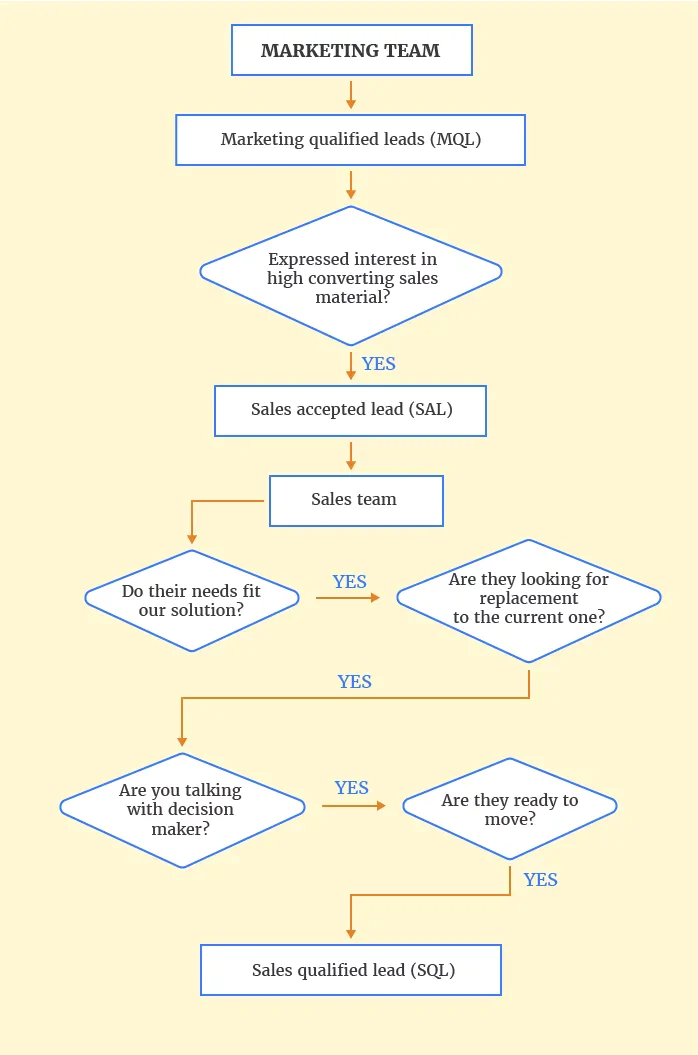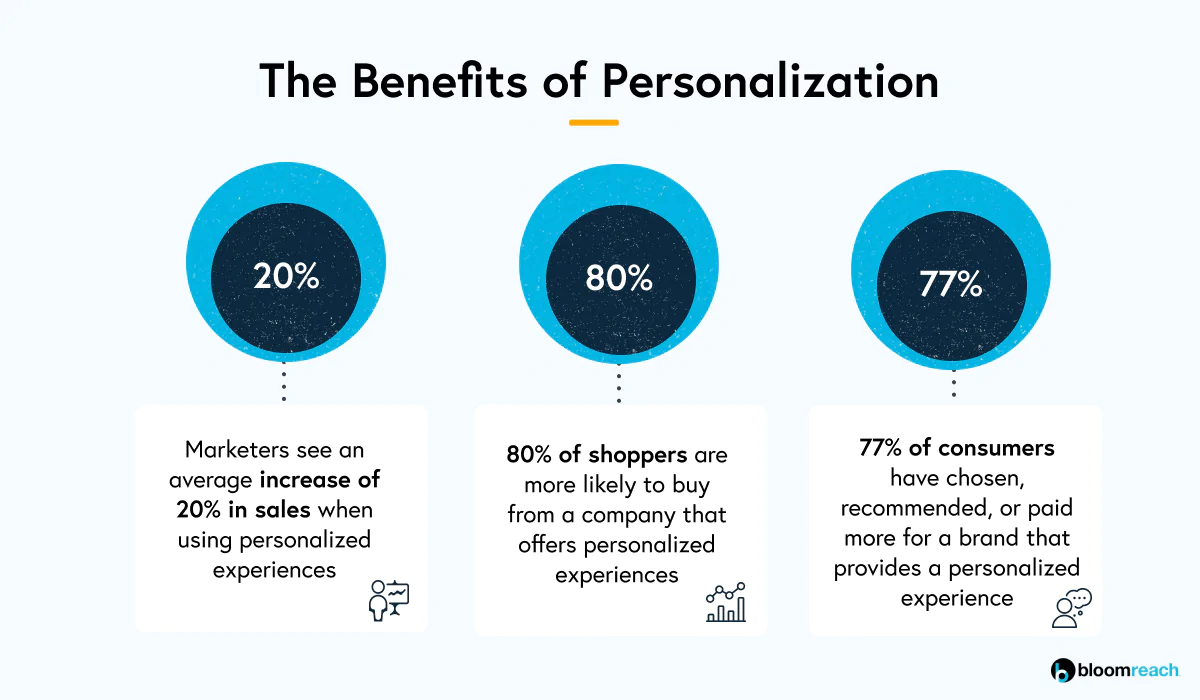Technology has become a crucial part of our lifestyle. Every aspect of human life is becoming increasingly connected and controlled by devices, software, and apps.
In fact, business now runs on technology, software, data, and analytics.
In such a situation, your audience’s history of technology usage can tell you a lot about their preferences, characteristics, and background – their age, job, education, and much more.
The creation, collection, and usage of big data has been growing rapidly in the past couple of years and is projected to keep expanding well into the present decade. With 90% of the world’s data having been created just in the past 3 years, technographic data is a goldmine of information for you to leverage in attracting leads and customers.

Source: Statita
No wonder then that the concept of “technographic data” is becoming increasingly popular. Much like the demographic and psychographic data, technographic data about consumers can give marketers and sales representatives tons of insights into their average customers, profitable customers, and ideal customers.
Key Takeaways:
- A person’s technological stack can convey a lot of information about them as a consumer.
- Technographic data enables you to engage consumers with relevant, contextual, and personalized messaging.
- You can use technographic data to influence and change the customer journey, thereby shortening the sales cycle.
What Is Technographic Data?
You’ve heard about demographic, firmographic, and psychographic data. These are the different types of information you can gather on consumers and use in your marketing and sales activities.
Technographics is the latest addition to the pack of market research data segments.
Technographic data refers to information about an individual or corporate entity’s technological stack. It tells us about the hardware and software a consumer uses – data that a business can use to target them in order to sell their products.
When you know what technology your ideal customer uses – if they’re a business, their CRM, their browsers, their OS, their preferred IM, and so on. This will give you a better picture of their operational processes, how they make their decisions, the issues they face, and so on. You can use this info to address specific pain points and convert them into a paying customer.
Technographic data is a boon for organizations as the need for sales-marketing alignment increases. It allows marketers to provide sales with contextual data that helps convert leads. This makes your sales enablement process effective, regardless of the physical distance between marketing and sales departments.
Here are 5 ways technographic data helps improve sales directly or indirectly:
1. Better Prioritization of Leads
Not every lead of your organization will qualify enough to reach the bottom of the sales funnel. Many leads will leak through the funnel along the way, and only a selected group will reach the point of conversion.
But even after that, not every lead which reached the bottom of your funnel has a chance of converting. This is why qualifying leads is important. It ensures that only those leads who have a decent likeliness of making a purchase are sent to sales representatives.
With technographic data, you can qualify your leads more accurately. You get answers to questions like
- What applications do they use for everyday operations? (Reveals the industry they’re in)
- Do they use free tools or a full-blown ERP or CRM solution? (Reveals their size and spending power)
- What kind of cloud systems do they use? (Tells you whether they’re a small business or enterprise and indicates their data privacy requirements)
Knowledge of their technological stack can give you a better idea of what are their precise needs as well as the urgency of said needs. As a result, your sales team can identify leads that have a higher chance of converting and create a tailored approach to nurture them. For organizations that rely on account-based marketing (ABM), this is a great way to prioritize accounts.
2. Improved Communication & Engagement
Why do we find it easier to talk with the people we know but not with strangers? It is because familiarity aids in communication.
Technographic data reveal a host of information about the modes of communication your customers prefer, the websites they frequent, and the times they use various devices, browsers, or applications. This data is precious to marketers because it helps them decide the channels to target these consumers. It is also precious to salespeople because they can build one-to-one rapport on these channels.
When the right technographic data is passed on to sales representatives, they can capitalize on it to address their problems better – they already know from the engagement history what the lead is struggling with and what they desire. As a result, you have a higher ratio of sales acceptance of MQLs.
Source: LeadFuze
3. Enhanced Personalization
The present market is brutal for pretty much every industry and company – there is cut-throat competition and consumers have innumerable (and great) options. Perhaps the only way you can stand out from the crowd is by personalizing every interaction with your audience.
Over the past few years, personalization has become extremely crucial in the consumer decision-making process – according to an Infosys report, 86% of consumers admit personalization impacts their decision to make a purchase.
Source: Bloomreach
Thus, there is no doubt then that personalization is the key to success for your business. But how do you go about it?
The simple answer is data.
The more data you have about your ideal customer, the easier it will be for you to personalize your sales efforts towards them. An important part of this data is technographics.
When you’re aware of consumers’ browsing habits, what sites they check out, what products they click on, what forums they contribute to, which apps they spend time on, and so on, you understand their preferences better. This allows you to retarget them with personalized messaging and create customized, win-win deals that give them value for money and are profitable to you too.
4. Control over the Customer Journey
The journey of a consumer from target to lead to prospect and finally to a customer is a long and arduous (for the sales team, at least) one. Therefore, without a proper strategy to keep your leads moving towards conversion, your leads will drop out of your funnel like water out of a leaking boat
One way of ensuring to keep your audience interested and engaged throughout their journey is by making use of technographic data. The tools they use and the sites they browse reveal more about the stage of the journey in which they are at the moment, their level of awareness, their dexterity in using certain products, what exposure they have to other brands, etc.
You can modify your messaging at various touchpoints accordingly – whether it is the content of your email newsletter or a conversation when they walk into your outlet. You can also optimize your lead routing workflow by allocating the lead to the sales rep best suited to handle them.
5. Maximizing Customer Lifetime Value (CLV)
When it comes to sales, convincing a lead to make a purchase is not enough. The end goal is to convert a lead into a loyal customer who keeps purchasing, refers a lot of other customers, and turns into a brand advocate.
Upselling is an amazing way for organizations to maximize customer lifetime value (CLV) and multiply their revenue. However, not every customer is ready to be upsold at any given time. The question then is how do you identify those customers that are ready to buy more and approach them immediately?
Technographic data allows you to build pattern-recognition algorithms and predictive models that analyze your targets’ purchase history, identify underserved customers, serve them with recommendations for related products, and show tailored ads or messaging encouraging cross-sells and upsells.
By using a smart combination of web scraping tools and market technographics, you can make deal information in your industry accessible to your sales teams on-demand. During negotiations, you can also empower sales reps with dynamic deal scoring (leads are clustered based on spend-related factors such as industry vertical, current assets, and past purchases).
Know Your Leads Inside Out
While individuals and companies themselves depend on technology for marketing, innovation, and operations, this data also puts them on the other side of the targeting gun. Technographic data is an essential and permanent part of the average consumer’s identity now. It is in companies’ best interests to intelligently use this data in non-interruptive ways to engage and nurture leads.
MXTR is designed to break the pattern of spray and pray marketing and haphazard targeting with intelligent lead segmentation, qualification, and routing. If you’re looking to empower your sales teams with better data and lead nurturing tools, you should check out MXTR automation today!
Featured image: Pexels







